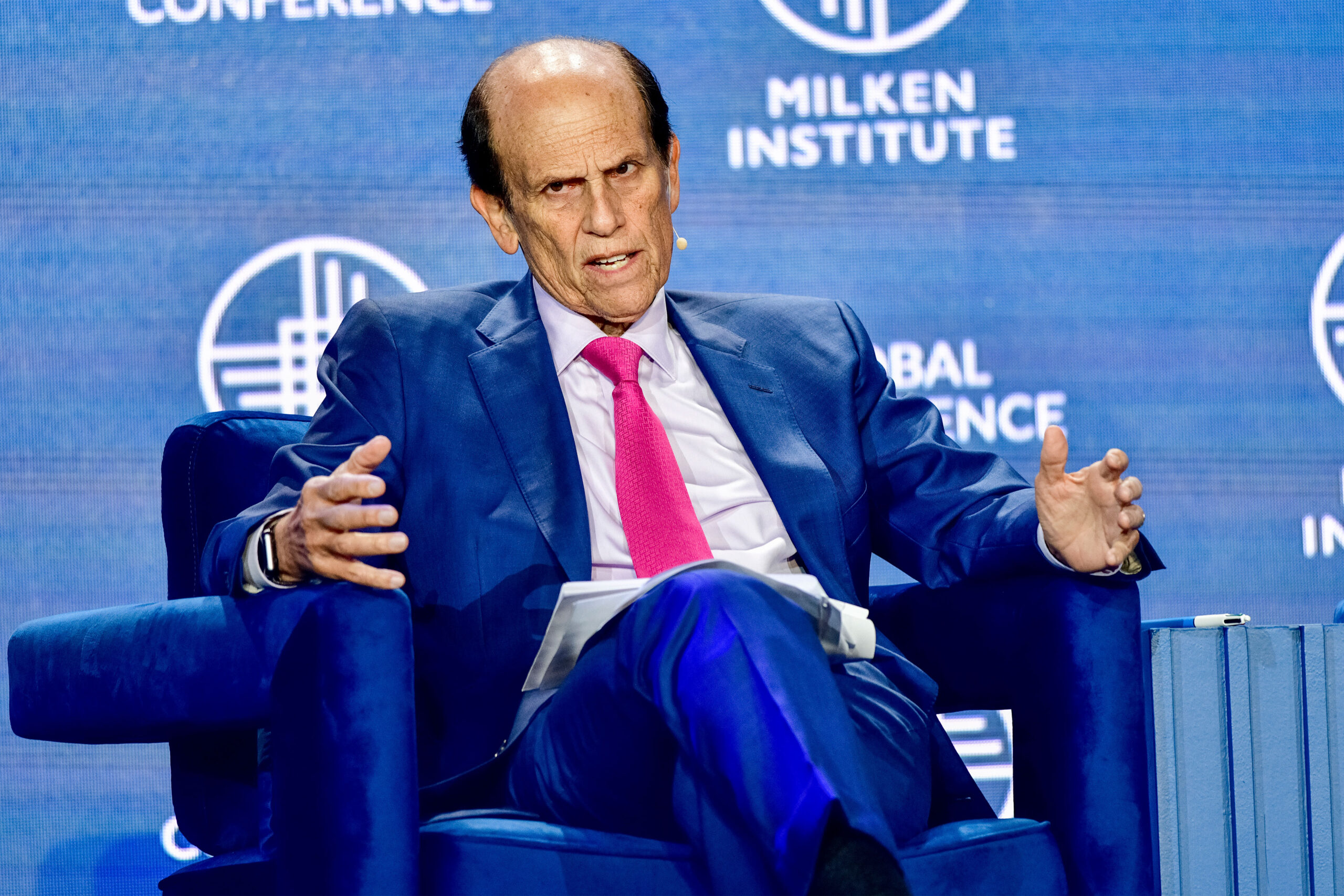|
Getting your Trinity Audio player ready...
|
Years ago, a top chemical biologist pondered ditching his cancer research to take a more lucrative commission growing healthier apples. Michael Milken stopped him.
“I told him we could probably eat the same apples for the next 20 years and be OK, but we wouldn’t be OK if he didn’t continue his potential groundbreaking work,” Milken, 76, said. “Then we funded him.”
Driven by a family history of disease and his own experience with prostate cancer, Milken, the onetime junk-bond wizard whose spectacular downfall on securities charges led to a 22-month prison term in the 1990s, has spent the last three decades trying to advance medical science so that people “can find cures to life-threatening diseases within their own lifetimes.”
In “Faster Cures,” a book that is part memoir and part medical history, the financier-turned-philanthropist argues for applying business principles to foster quicker medical breakthroughs: more collaboration and information-sharing among researchers, a more streamlined path through government regulations, and more public and private funding to keep the best and brightest working in the field. The book was written with Geoffrey Evans Moore, a longtime associate of Milken’s.
Milken, whose net worth is estimated at $6 billion, has donated $1.2 billion to medical research and public health causes and raised another $1 billion for them from donors, according to a spokesperson. Much of that money is distributed through the Santa Monica-based Milken Institute, which funds organizations around the world that support research and education.
This interview has been edited for length and clarity.
Q: Was it difficult to write about your father’s death from cancer and your own diagnosis of advanced prostate cancer in 1993, which was thought at the time to be terminal?
Life-threatening diseases are not separated by wealth or anything else. One in 2 men are going to get diagnosed with cancer in their lifetime; for women, it’s 1 in 3. In the hospital room or in surgery, we’re all equal. That’s why I wanted to personalize it because my family is no different. In the 1970s, science could not move fast enough to save my father’s life.
Q: Is the U.S. too slow in reaching cures?
A train today in Europe or Asia can travel at 200 miles an hour, but the average train in the U.S. travels at the same speed as 100 years ago because you can’t put faster trains on tracks that aren’t more modern. Science is this train that’s moving fast, but the tracks are 20th-century tracks. As science moves quickly — sequencing your genome and your microbiome, for example — many of the ways we deal with our health system still relate to what it was in the 1900s, not in this century.
Q: What are those outdated practices?
One is collaboration. Thirty years ago, after my diagnosis, I attended a prostate cancer conference at MD Anderson Cancer Center in Houston, and I noticed that no one from Memorial Sloan Kettering [in New York City] was presenting, and they were the other recognized top experts in the field. When I asked why, I was told by MD Anderson’s people that they felt Sloan Kettering was a competitor. I said, “They’re not a competitor to patients.” We’ve done a huge amount of work in that area to get researchers and scientists sharing information and working together.
Q: Are cancer patients getting into clinical trials at earlier stages?
Yes, but there’s another element here relating to health equity. The demographics of America have changed considerably. Sixty years ago, 75% of everyone living in the U.S. who was not born here came from Europe. Today, more than 70% of everybody living here who wasn’t born here came from Latin America or Asia, but our clinical trials are still largely Caucasian. We’re not including people who will someday make up the majority of people in this country.
Q: You also spend a lot of time writing about prevention, especially as it pertains to diet. Why?
If you went to medical school in China 30 or 40 years ago, you wouldn’t have even studied diabetes because it was so rare there. Today, because of changes in the food chain and what they’re eating — meat-based and fat-based diets — China has the most people with diabetes of any country in the world. That’s what thousands of McDonald’s and KFC and other franchises will do. We also know that eating certain foods can slow the growth of certain kinds of cancers, or that changing your diet can accelerate the growth. The CEO of one of the largest medical research companies in the world told me, “The next great drug is going to be prevention.”
Q: But isn’t the medical industry oriented toward selling treatment and not prevention?
When we proposed the idea to the medical community in the ’90s that you are what you eat, they said, “Prove it.” And we didn’t sequence the genome until 2003, so prior to that the evidence was mostly anecdotal, but there was plenty of it. The notion is mainstream today, but teaching doctors that nutrition makes a difference is still a minor, minor part of medical school. It should be at the forefront. We often refer to the produce section of the grocery store as the pharmacy of the 21st century.
Q: Your financial theories revolved around finding lower-graded bonds that produced great returns — essentially, identifying an undervalued segment of the market. Is there an undervalued equivalent in medicine or science?
It’s about the democratization of capital. In medicine and science, access to financial capital serves as a multiplier effect, but the largest asset is human capital. I’ve spent considerable time trying to identify the future Ted Turners or [telecommunications giant] John Malones of the world of medicine, then convincing them to go into research and funding them.
Q: How do you provide financing to the most talented people in the field?
That includes private and public funding. In 1998, we organized a march on Washington, and a few months later President Clinton signed into law a massive increase in the NIH [National Institutes of Health] budget. Since then, there’s been an incremental half a trillion dollars invested into the NIH, and that has made all the difference for so many organizations working on specific diseases or types of cancer.
Q: Why do you fund medical research?
My interest in medicine and science started when I was 8 years old. It accelerated in the ’70s when my wife’s mother was diagnosed with breast cancer and my father’s melanoma returned. That began a search for medical solutions that I brought into my existing philanthropy in 1982. Who a person is and what they believe in — there has always been a lot of misinformation out there, and it’s only going to get worse with artificial intelligence chat. It’s not just related to me. But I think the thousands of companies that we financed, and the millions of jobs created, are evidence that the ideas I put forth are today in the mainstream. All of the facts are there for one to see.
This article was produced by KFF Health News, which publishes California Healthline, an editorially independent service of the California Health Care Foundation.



